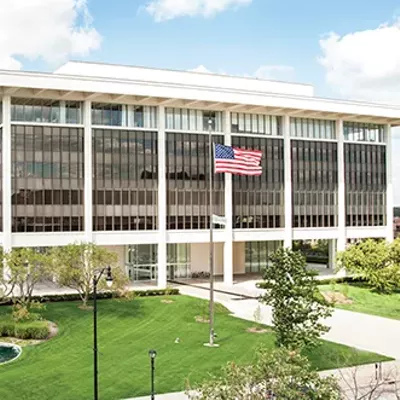By David A. Kelm
Every year, about this time, it does not matter if you are running late for work, your son’s ballet recital, your daughter’s wrestling match or just to grab poster board, glue, markers and glitter at half-past midnight for a “science project you just remembered,” you are likely to run into traffic backed up by some farm behemoth or other lumbering between fields. While it might be easy to forget the agricultural heritage surrounding Springfield as we run from the coffee shop to work in a comfy office, Sangamon County farmers are in the midst of one of the largest – if not the largest – harvests of all time.
Recent census numbers show that Sangamon County is still an agriculturally heavy area of the state of Illinois. While politicians and policy makers at the city and state level often point to state government jobs or the medical community as an economic engine, agriculture is still of great significance to Sangamon County, which is approximately 518,000 acres. With about 1,100 farms, Sangamon County has about 382,000 acres or 74 percent of land mass under till. For the most part, Sangamon County farmers plant and harvest corn and beans.
Andy and John Goleman of Goleman Farms are looking at a record harvest on the acreage they farm in southeastern Sangamon County. Andy Goleman, who also serves on the Sangamon County Board, said last week that this year’s harvest, in some respects, will be the best he has seen in his life. “We are looking at fields with 70 bushels of beans [fusion_builder_container hundred_percent="yes" overflow="visible"][fusion_builder_row][fusion_builder_column type="1_1" background_position="left top" background_color="" border_size="" border_color="" border_style="solid" spacing="yes" background_image="" background_repeat="no-repeat" padding="" margin_top="0px" margin_bottom="0px" class="" id="" animation_type="" animation_speed="0.3" animation_direction="left" hide_on_mobile="no" center_content="no" min_height="none"][per acre],” Goleman said. A typical year would yield 55 bushels with this year coming in nearly 25 percent higher than usual. As for corn, Goleman is seeing 250-275 bushels an acre whereas his farm typically harvests 215-220 during an average year.
Jim Birge, Sangamon County Farm Bureau manager, is seeing similar numbers across Sangamon County. “We are having fantastic yields this year,” Birge said. “We are seeing yields considerably better than usual and in some cases better than ever seen.” Birge and Goleman both noted that the “super-sized” harvest is due to a good amount of rain that fell in a timely manner throughout the growing season.
This year’s yields and the late season rains, however, bring with them their own problems. Goleman notes that in his area of Sangamon County they have had 18 ½ inches of rain since Oct. 1. Wet, soggy conditions bog down the harvest process, especially beans. “Beans gotta have it dry in order to get them out of the field,” Goleman said. With all of the rain, the fields are rutted and messy. Birge also noted that the wet conditions are an added challenge for farmers struggling to harvest such a large crop. “The muddy fields are a slog for farmers and we have seen some stalk rot in the corn because of the excessive moisture,” Birge said.
For those of us who experience their grain from the open end of a corn flakes box or a toasted multi-grain bagel schmeared with honey maple cream cheese, we can be forgiven (once) for the misapprehension that Harvest-A-Palooza 2014 will result in a whirlwind of profits for area farmers. According to Birge and Goleman, that is not going to be the case this year. For a variety of reasons, grain prices are significantly lower this year. Sangamon County agriculture is an international business that is impacted by geopolitical events and multinational trade agreements. Birge notes that one such flashpoint affecting prices is the crisis with Russia over Ukraine. “When the U.S. restricts support to Russia, Russia reacts, impacting our export of grain to that part of the world,” Birge said. Prices are a reflection of the supply and demand cycle and the harvest is much “better than anticipated this year,” added Goleman.
Sangamon County agriculture is an economic engine that dramatically adds to the economy. “When farmers make money, they spend money,” Goleman said. “They buy vehicles and equipment that drive union jobs and sales taxes for the economy.” Goleman noted that because prices are lower this year, some farmers are going to hold back on extensive purchases impacting the local economy. Birge noted that agriculture is the “sleeping giant of the Sangamon County economy that isn’t always understood” in the same way manufacturing, retail or medical are understood. One thing is clear: this year, with the mega-harvest running to mid-November, more and more of us are going to run up against the orange triangles and flashing yellow lights as we weave our way across town.
Dave Kelm is a local attorney who can be reached at DavidAKelm@gmail.com.[/fusion_builder_column][/fusion_builder_row][/fusion_builder_container]












